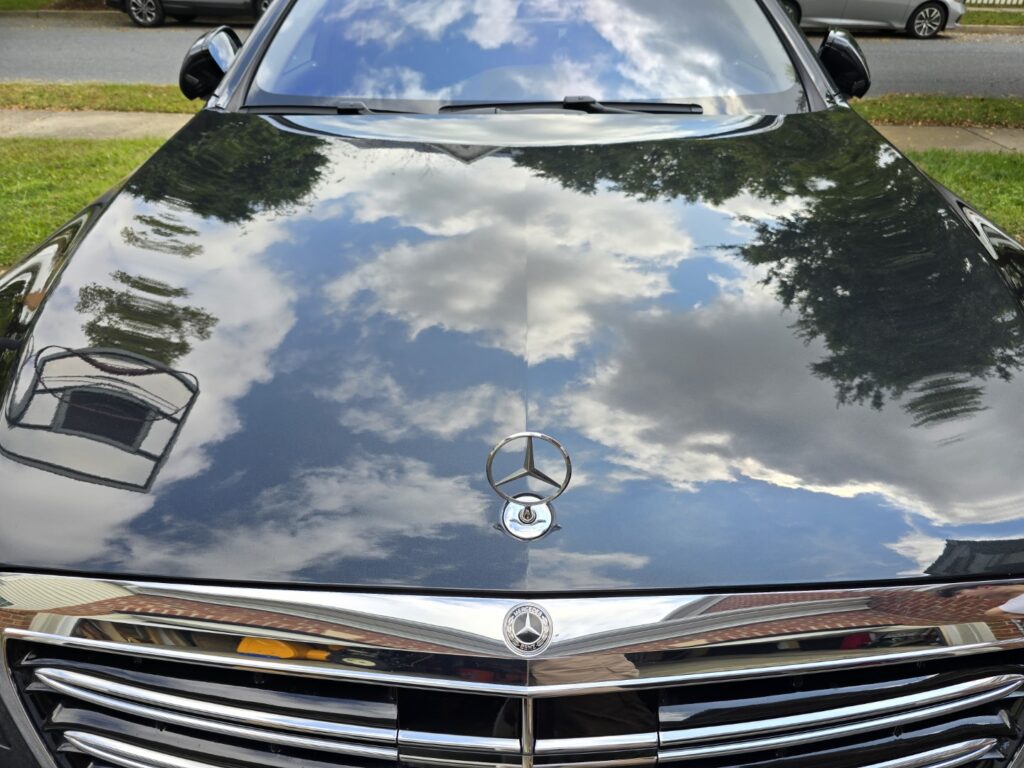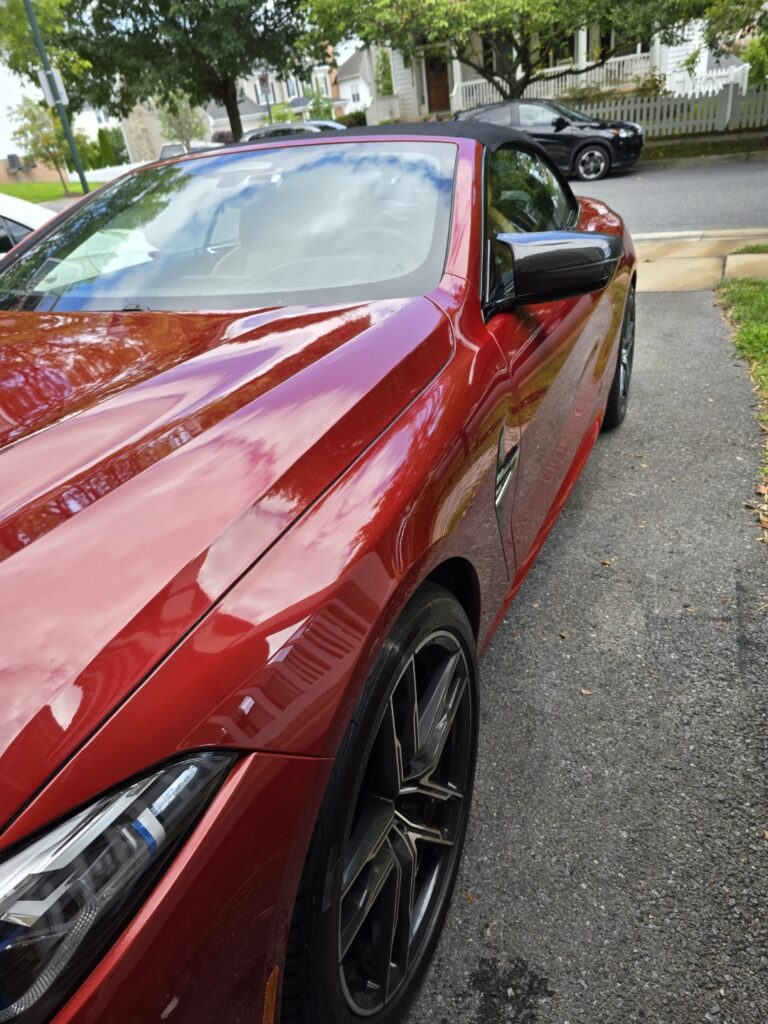Introduction to Paint Protection

Your car isn’t just a mode of transportation; it’s an investment and a reflection of your personal style. However, constant exposure to the elements – such as harsh sunlight, rain, snow, and road debris – can degrade your vehicle’s paintwork over time. Protecting your car’s exterior is essential for maintaining its value and aesthetic appeal. This is where solutions like ceramic coating and wax come into play. But with so many options available, which one is truly worth your money? In this article, we’ll explore the differences between ceramic coating and wax, weighing their pros and cons to help you make an informed decision.
Understanding Ceramic Coating
What Is Ceramic Coating?

Ceramic coating is a liquid polymer applied to a vehicle’s exterior. This advanced formula chemically bonds with the factory paint, forming a protective layer that is both durable and glossy. Unlike traditional wax, ceramic coating doesn’t just sit on the surface – it integrates with the paintwork to create a long-lasting shield.
How Ceramic Coating Works
Ceramic coating utilizes nanotechnology to fill microscopic imperfections in the car’s paint. This creates a smooth, hydrophobic surface that repels water, dirt, and contaminants. The coating also enhances the vehicle’s gloss, giving it a showroom-like finish.
Benefits of Ceramic Coating
- Long-Lasting Protection: Once applied, ceramic coating can last for several years, reducing the need for frequent reapplications.
- Hydrophobic Properties: Water and grime slide off effortlessly, making cleaning a breeze.
- UV Resistance: Protects against sun damage and prevents paint fading.
- Chemical Resistance: Shields against bird droppings, acid rain, and other harmful contaminants.
- Enhanced Gloss: Provides a mirror-like shine that elevates the car’s aesthetic appeal.
Drawbacks of Ceramic Coating
- High Cost: Professional ceramic coating applications can be expensive, ranging from $500 to $2,000 or more.
- Complex Application: DIY kits are available, but achieving professional results requires skill and precision.
- No Scratch-Proof Guarantee: While it provides some scratch resistance, ceramic coating won’t make your car impervious to damage.
Understanding Car Wax
What Is Car Wax?
Car wax is a blend of natural and synthetic ingredients designed to enhance your vehicle’s shine and provide a layer of protection. It’s one of the most traditional methods for maintaining a car’s appearance and is widely accessible.
Types of Car Wax
- Natural Wax: Typically made from carnauba wax, known for its deep shine and warmth.
- Synthetic Wax: Offers longer-lasting protection but may lack the richness of natural wax.
- Spray Wax: Quick and easy to apply but less durable than paste or liquid waxes.
Benefits of Wax
- Affordable: Wax is a cost-effective option for car enthusiasts on a budget.
- Easy Application: Many wax products are user-friendly, making them ideal for DIYers.
- Improves Shine: Provides a glossy finish and enhances the depth of your car’s paint.
Drawbacks of Wax
- Short Lifespan: Most waxes only last a few weeks to months before reapplication is needed.
- Limited Protection: Doesn’t offer the same level of UV, chemical, or scratch resistance as ceramic coating.
- High Maintenance: Frequent applications are necessary to maintain protection and shine.
Ceramic Coating vs. Wax: A Side-by-Side Comparison
Durability
Ceramic coating outshines wax in terms of longevity, offering protection that can last several years. In contrast, wax requires frequent reapplication to maintain its protective properties.
Protection Capabilities
While wax provides basic protection against dirt and moisture, ceramic coating offers superior resistance to UV rays, chemicals, and environmental contaminants.
Application Process
Applying wax is straightforward and beginner-friendly, while ceramic coating often requires professional installation for optimal results.
Maintenance and Care
Ceramic-coated vehicles are easier to clean due to their hydrophobic properties. Waxed cars, however, require regular upkeep to sustain their shine and protection.
Cost Analysis
Wax is a more affordable upfront option, but its frequent reapplication can add up over time. Ceramic coating’s higher initial cost is balanced by its long-lasting performance and reduced maintenance needs.
Which Option Is Best for You?
Factors to Consider Before Choosing
- Budget: Determine how much you’re willing to spend on paint protection.
- Usage: Consider your driving habits and exposure to harsh conditions.
- Maintenance Preferences: Decide how much time and effort you want to dedicate to car care.
Best Scenarios for Ceramic Coating
- Long-term vehicle ownership.
- Harsh climates with frequent exposure to UV rays and contaminants.
- Car enthusiasts seeking a high-gloss, low-maintenance solution.
Best Scenarios for Wax
- Short-term or seasonal protection needs.
- Budget-conscious car owners.
- DIY enthusiasts who enjoy regular maintenance.
FAQs
Is Ceramic Coating Better Than Wax?
Ceramic coating offers superior durability and protection, but wax is a budget-friendly option for short-term needs.
How Long Does Ceramic Coating Last?
With proper care, ceramic coating can last 2 to 5 years or more.
Can I Apply Wax Over Ceramic Coating?
Yes, waxing over ceramic coating can enhance the shine but is not necessary for protection.
How Much Does Ceramic Coating Cost?
Professional applications range from $500 to $2,000, depending on the vehicle size and coating quality.
Does Wax Offer UV Protection?
Wax provides some UV protection but is less effective than ceramic coating.
Is Ceramic Coating Safe for All Paint Types?
Yes, ceramic coating is generally safe for all factory paint types when applied correctly.
Conclusion: The Verdict on Ceramic Coating vs. Wax
Choosing between ceramic coating and wax depends on your specific needs, budget, and preferences. Ceramic coating is a long-term investment offering unparalleled protection and ease of maintenance, while wax is a cost-effective, traditional option for short-term shine and protection. Assess your priorities to determine which solution is worth your money and ensures your vehicle looks its best.
